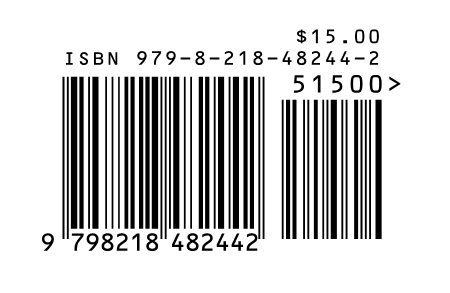
The Bookland EAN bar code is actually two bar codes side by side. The larger bar code to the left is the EAN derived from the ISBN. The smaller bar code to the right is a 5-digit add-on where various information might be encoded. Most often, the add-on is used to encode the retail price of the publication. A Bookland EAN code which has the price encoded in the add-on is called an EAN-5. It gets it’s name from the first digit of the add-on, which is the currency indicator. Five is the designation for US dollars. An add-on of 51095, then, encodes the price $10.95. A book priced at $3.00 would have the add-on 50300. Books priced at $99.99 or higher use the add-on 59999.
The larger book retailers prefer the use of EAN/5. When the publisher chooses not to include the price, however, the add-on is 90000 (EAN/9), which is a null code indicating that there is no data encoded. Scanners in bookstores in the US cannot always read the Bookland EAN code without its 5-digit add-on. Thus, the use of either the EAN/5 or the EAN/9 is highly recommended. There has been a dramatic increase in the usage of Bookland EAN symbols, since companies are investing millions of dollars in computer systems and scanning equipment to take advantage of automatic data collection. The foundation of these systems is contingent on barcode print quality. When symbols cannot be read or decode incorrectly, the efficiency of these systems is brought to a halt. Consequently, many retailers and wholesalers are severely penalizing consumer goods manufacturers who furnish substandard symbols.
In many cases, new self publishers are not sure of a price so we recommend they encode the 90000 null code. This is very common and the barcode can be changed later if/when a price is set (the ISBN does not change)